| DC66504 |
N-Boc-3-Iodo-L-alanine benzyl ester
Featured
|
|
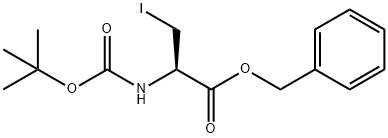
|
| DC66505 |
trans-Glutaconic acid
Featured
|
|

|
| DC66506 |
Naphthalene, 2-phenyl-
Featured
|
|
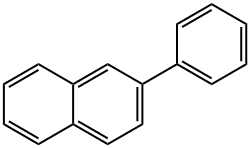
|
| DC66507 |
(1H-benzodimidazol-2-yl)methanamine hydrochloride
Featured
|
|

|
| DC26111 |
Cevidoplenib
Featured
|
Cevidoplenib (SKI-O-703) is an orally available inhibitor of spleen tyrosine kinase (Syk), with potential anti-inflammatory and immunomodulating activities. Cevidoplenib is also the mesylate form of SKI-O-592. Cevidoplenib and SKI-O-592 inhibits BCR-mediated survival, proliferation, and differentiation of B cells. And SKI-O-592 potently inhibits multiple kinases with IC50s of 6.2 nM (Syk), 1.859 μM (Jak2), 5.807 μM (Jak3), 0.412 μM (RET), 0.687 μM (KOR), 1.783 μM (FLT3), 16.96 μM (FGFR1), 5.662 μM (FGFR3), and 0.709 μM (Pyk2), respectively. |
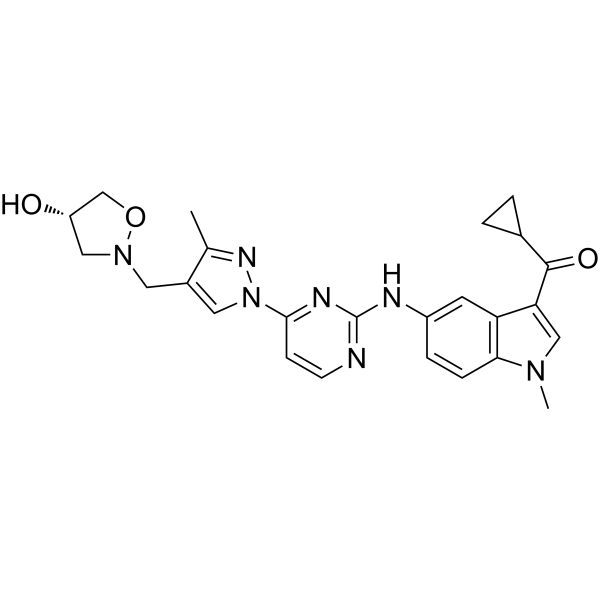
|
| DC66510 |
LNP Lipid-7
Featured
|
1LNP Lipid-7 (Compound 7013) is a lipid. LNP Lipid-6 can be used to prepare lipid nanoparticles (LNP) and for drug delivery. |
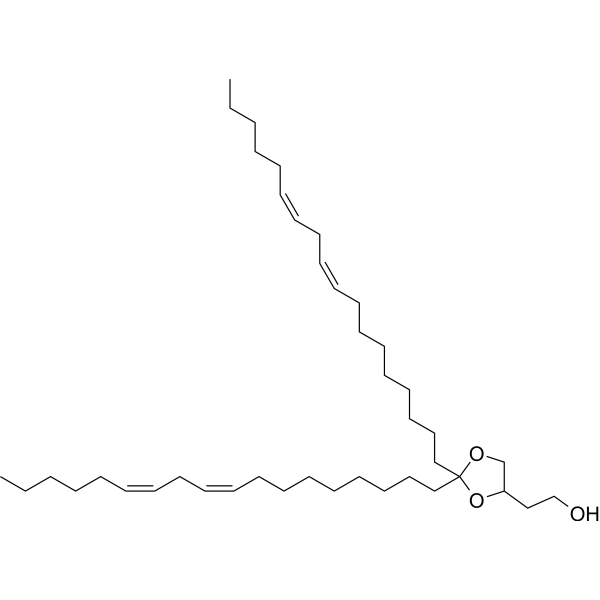
|
| DC66530 |
BLU-451
Featured
|
BLU-451, also known as LNG-451, orally bioavailable, central nervous system (CNS) penetrating, mutant-selective covalent inhibitor of epidermal growth factor receptor (EGFR) exon 20 insertion (Ex20ins) activating mutations, with potential antineoplastic activity. Upon oral administration, EGFR Ex20ins inhibitor BLU-451 selectively targets, irreversibly binds to and inhibits the activity of EGFR Ex20ins and some other oncogenic point mutations. This prevents EGFR Ex20ins-mediated signaling. This may induce cell death and inhibit tumor growth in EGFR Ex20ins-overexpressing tumor cells. EGFR, a receptor tyrosine kinase mutated in many tumors, plays a key role in tumor cell proliferation and tumor vascularization. BLU-451 is able to penetrate the blood-brain-barrier (BBB) and may therefore exert its activity against EGFR Ex20ins-driven CNS primary tumors and CNS metastases. BLU-451 does not inhibit the activity of wild-type (WT) EGFR. EGFR Ex20ins are oncogenic driver mutations that constitutively upregulate kinase activity. |
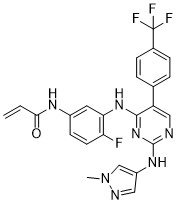
|
| DC66531 |
3-Chloro-6-(trifluoromethyl)pyridazine
Featured
|
|

|
| DC66532 |
1H-Pyrazole-3-carboxamide, 5-(1,1-dimethylethyl)-N-(2-hydroxy-1,1-dimethylethyl)-1-[5-(trifluoromethyl)-2-pyridinyl]-
Featured
|
|
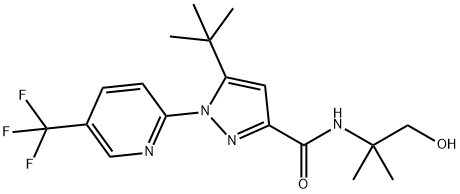
|
| DC66533 |
UM729
Featured
|
|
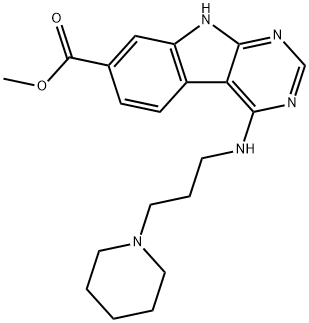
|
| DC66534 |
VK-2019
Featured
|
VK-2019 is a selective EBNA1 inhibitor. VK-2019 was developed as a highly specific inhibitor of EBNA1 DNA binding activity and is currently in phase 1 development as a treatment for EBV-associated carcinomas. EBNA1 is an Epstein Barr virus (EBV) protein expressed in all EBV-associated cancers. EBNA1 plays a critical role in the replication and maintenance of EBV episomes in latently infected cells. |
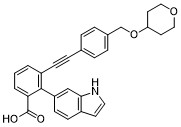
|
| DC66535 |
3-Pyridinecarbonitrile, 1,2,5,6-tetrahydro-4-methyl-2,6-dioxo-5-[(5-phenyl-2-furanyl)methylene]-, (5Z)-
Featured
|
|
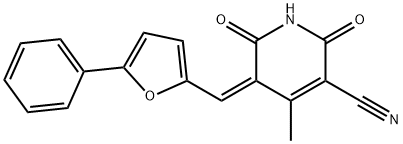
|
| DC66536 |
SR2640
Featured
|
|
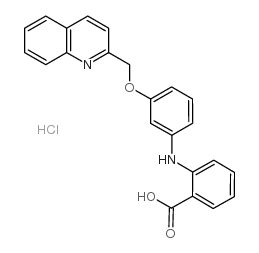
|
| DC66537 |
T20
Featured
|
|

|
| DC66538 |
PDE4B-IN-2
Featured
|
PDE4B-IN-2 is an orally active and selective PDE4B inhibitor with an IC50 of 15 nM. PDE4B-IN-2 inhibits PDE4D (IC50=1.7 µM). PDE4B-IN-2 exhibits potent anti-inflammatory effects. |
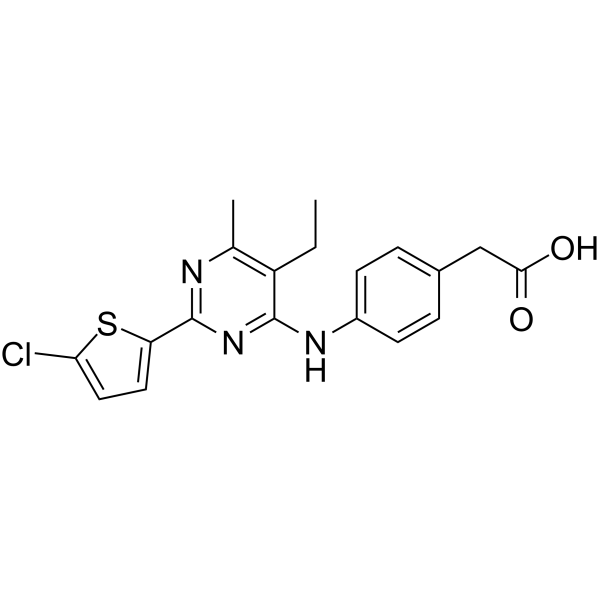
|
| DC66539 |
methyl 2-((tert-butoxycarbonyl)amino)-4-chlorothiazole-5-carboxylate
Featured
|
|
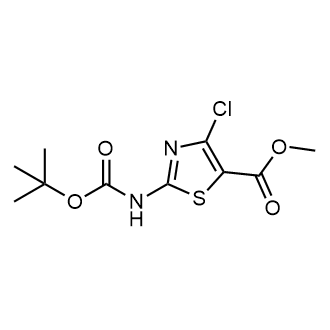
|
| DC66540 |
WAY-380064-A
Featured
|
PRMT5 inhibitors; PRMT5 inhibitors; |
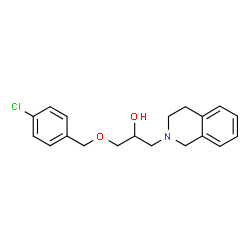
|
| DC66541 |
NecroX-7
Featured
|
NecroX-7 is a potent free radical scavenger and a HMGB1 (high-mobility group box 1) inhibitor. NecroX-7 can be used as an antidote to acetaminophen toxicity. NecroX-7 exerts a protective effect by preventing the release of HMGB1 in ischemia/reperfusion injury. NecroX-7 inhibits the HMGB1-induced release of TNF and IL-6, as well as the expression of TLR-4 and receptor for advanced glycation end products. NecroX-7 can be used graft-versus-host disease (GVHD) research. |
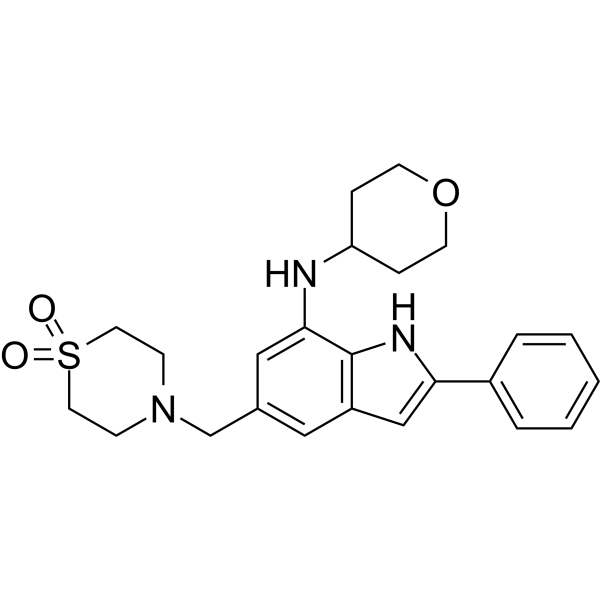
|
| DC66542 |
UNC8153 TFA
Featured
|
UNC8153 TFA is a potent and selective nuclear receptor-binding SET domain-containing 2 (NSD2)-targeted degrader with a Kd of 24 nM. UNC8153 TFA reduces the cellular levels of both NSD2 protein and the H3K36me2 chromatin mark. UNC8153 TFA contains a simple warhead that confers proteasome-dependent degradation of NSD2. |
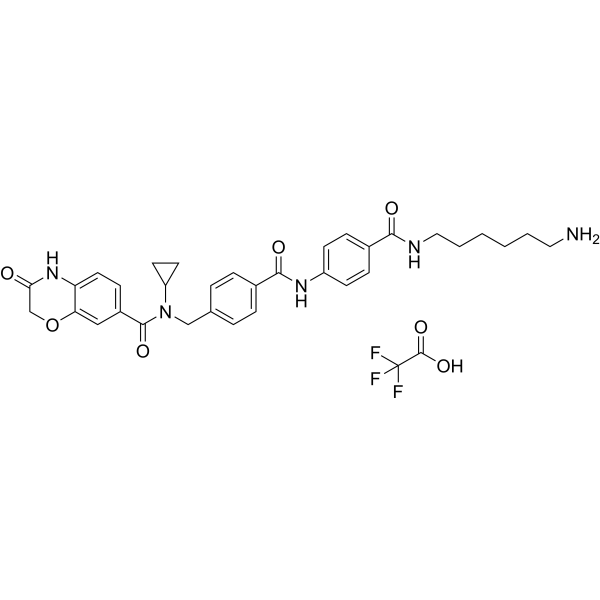
|
| DC60609 |
AK59-51TB (AK59)
Featured
|
AK59-51TB (AK59) is a STING degrader leveraging HERC4, a HECT-domain E3 ligase. |
.png)
|
| DC60610 |
IDE397
Featured
|
IDE397 is a potent inhibitor of MAT2A, which is developed to selectively exploit this synthetic lethal vulnerability in MTAP−/− tumors. |
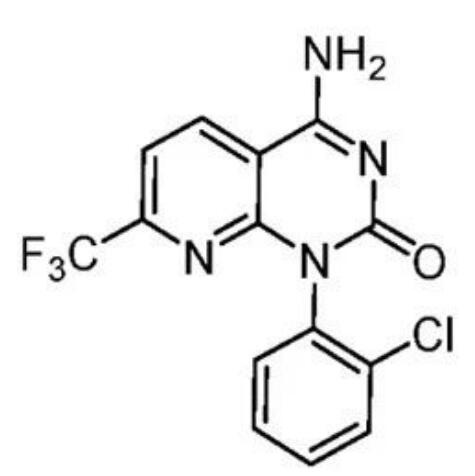
|
| DC60611 |
Compound 32 (HER2)
Featured
|
Compound 32 (HER2) is a potent and selective covalent inhibitor of HER2/WT and HER2/YVMA with IC50 of 49 nM and 42 nM, respectively. |
.jpg)
|
| DC60612 |
IDOR-1117-2520
Featured
|
IDOR-1117-2520 is a selective and insurmountable antagonist of CCR6 with IC50 of 20 nM. |
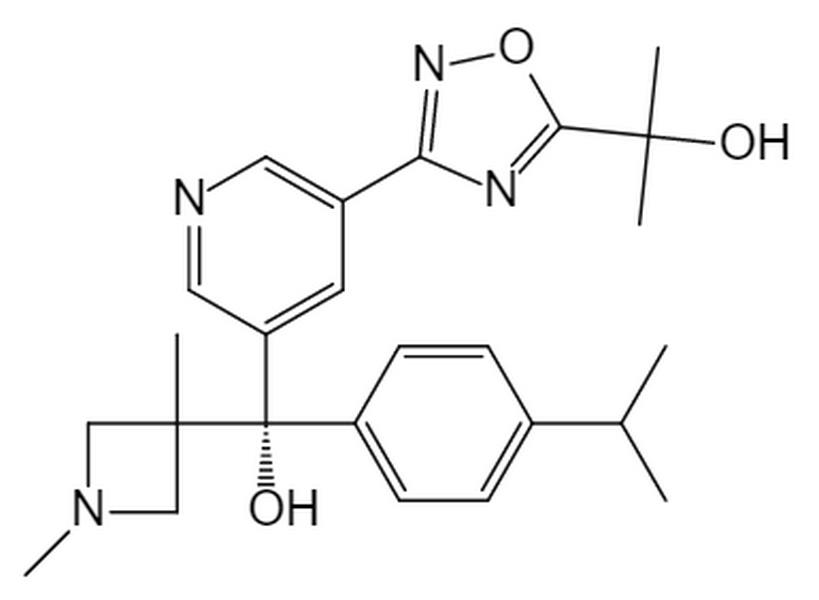
|
| DC66543 |
Pidobenzone
Featured
|
Pidobenzone is a dermatologic agent. |

|
| DC66544 |
Pseudouridine 5'-triphosphate trisodium
Featured
|
Pseudouridine-5’-triphosphate (Pseudo-UTP) is one of the most commonly used modified nucleoside for the polymerase-mediated synthesis of RNA molecules. Compared with uridine-containing unmodified mRNAs, the application of pseudouridine-containing modified mRNAs exhibits better nuclease stability, immunogenicity, and translational properties. |
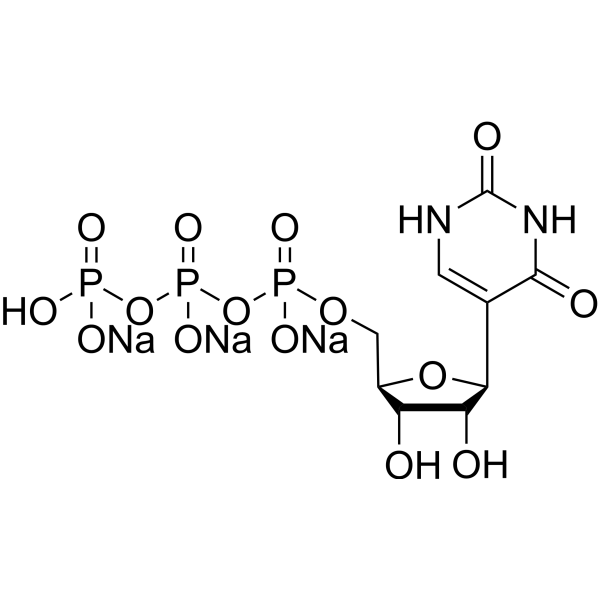
|
| DC66545 |
5-Bromo Brassinin
Featured
|
|
.png)
|
| DC60613 |
LSN3441732
Featured
|
LSN3441732 is a dimeric compound and inhibits the formation of Lipoprotein(a) (Lp(a)) particles in vitro with IC50 of 0.18 nM. |
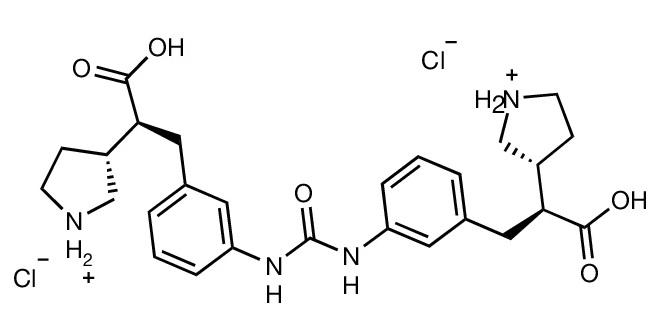
|
| DC66546 |
R-Sirpiglenastat
Featured
|
R-Sirpiglenastat is the R- isomer of Sirpiglenastat(DRP-104).Sirpiglenastat (DRP104) is a broad acting glutamine antagonist. Sirpiglenastat has anticancer effects by directly targeting tumor metabolism and simultaneously inducing a potent antitumor immune response. |
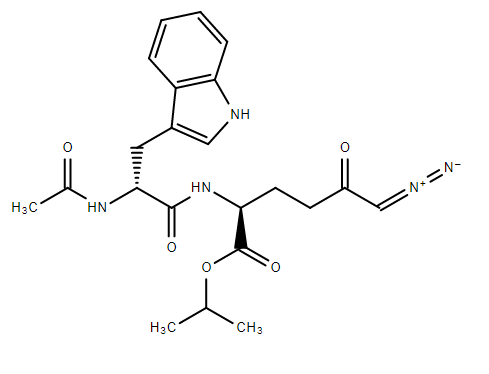
|
| DC66547 |
SL25 intermediate 16
Featured
|
|
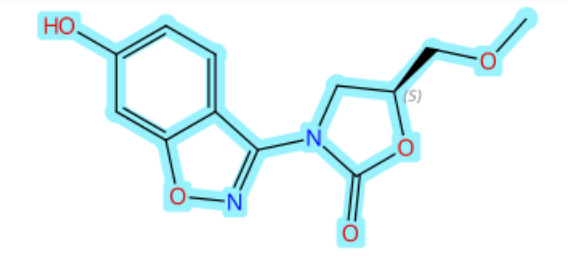
|
| DC60614 |
BIO-8169
Featured
|
BIO-8169 is a highly potent, selective, and brain-penetrant IRAK4 inhibitor with IC50 of 0.2 nM. BIO-8169 has an excellent PK profile, reduces the in vivo production of pro-inflammatory cytokines, and is tolerated in toxicity studies in rodents and dogs. |
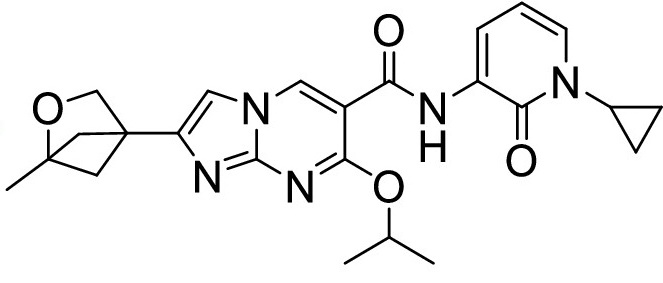
|



















.png)

.jpg)



.png)



